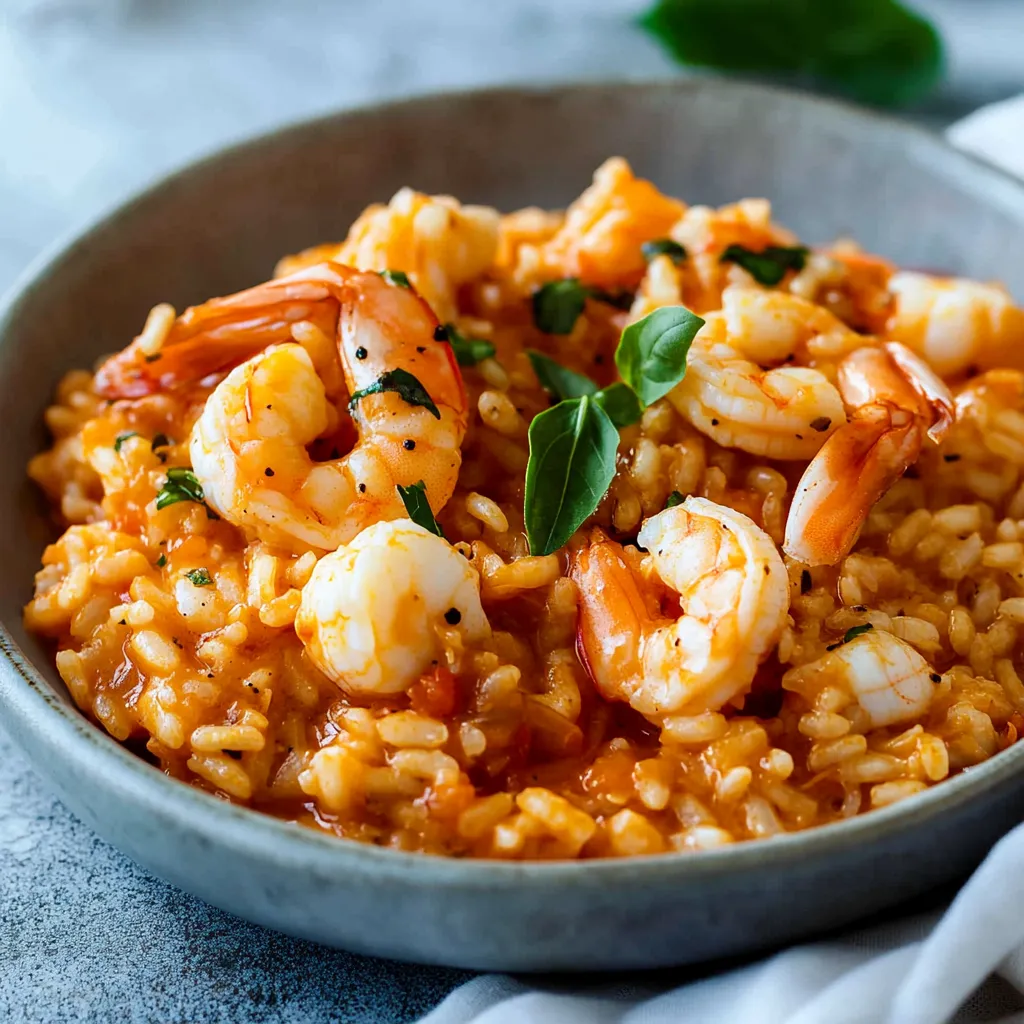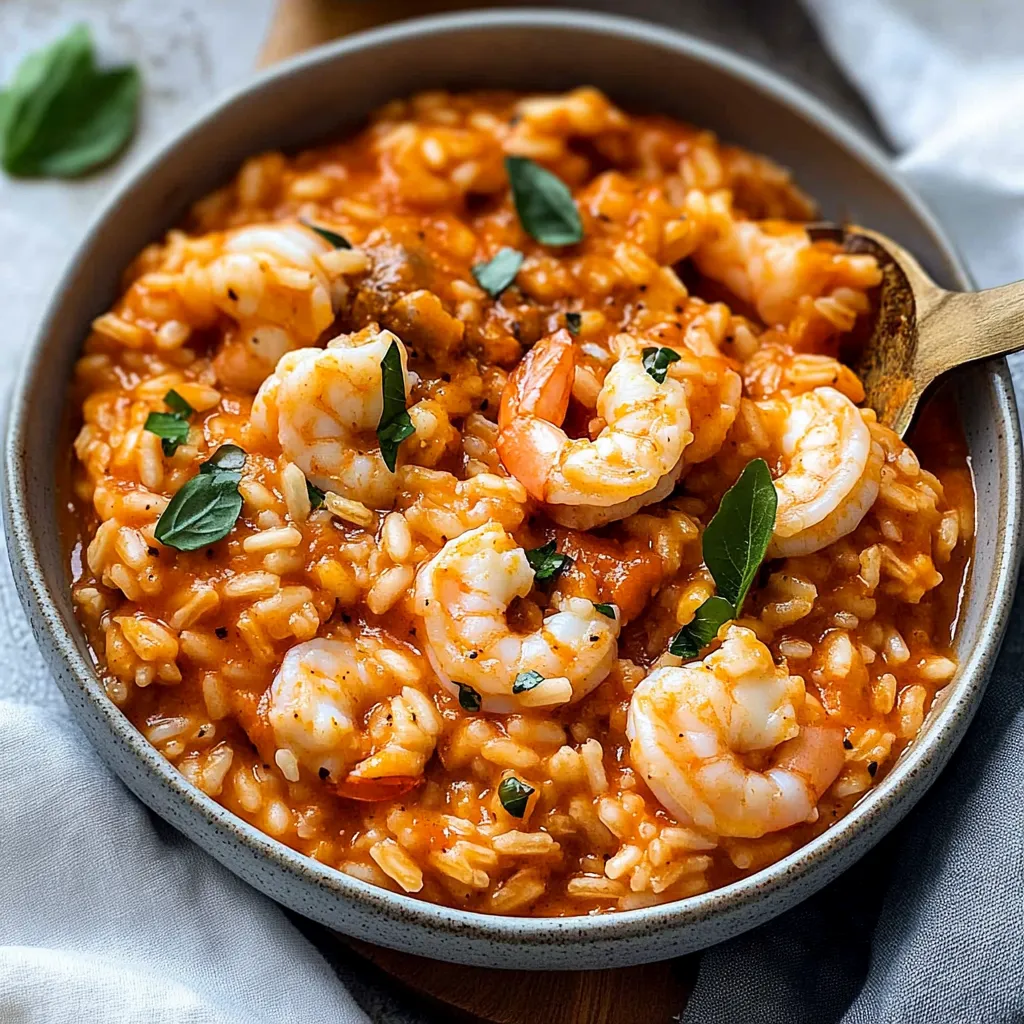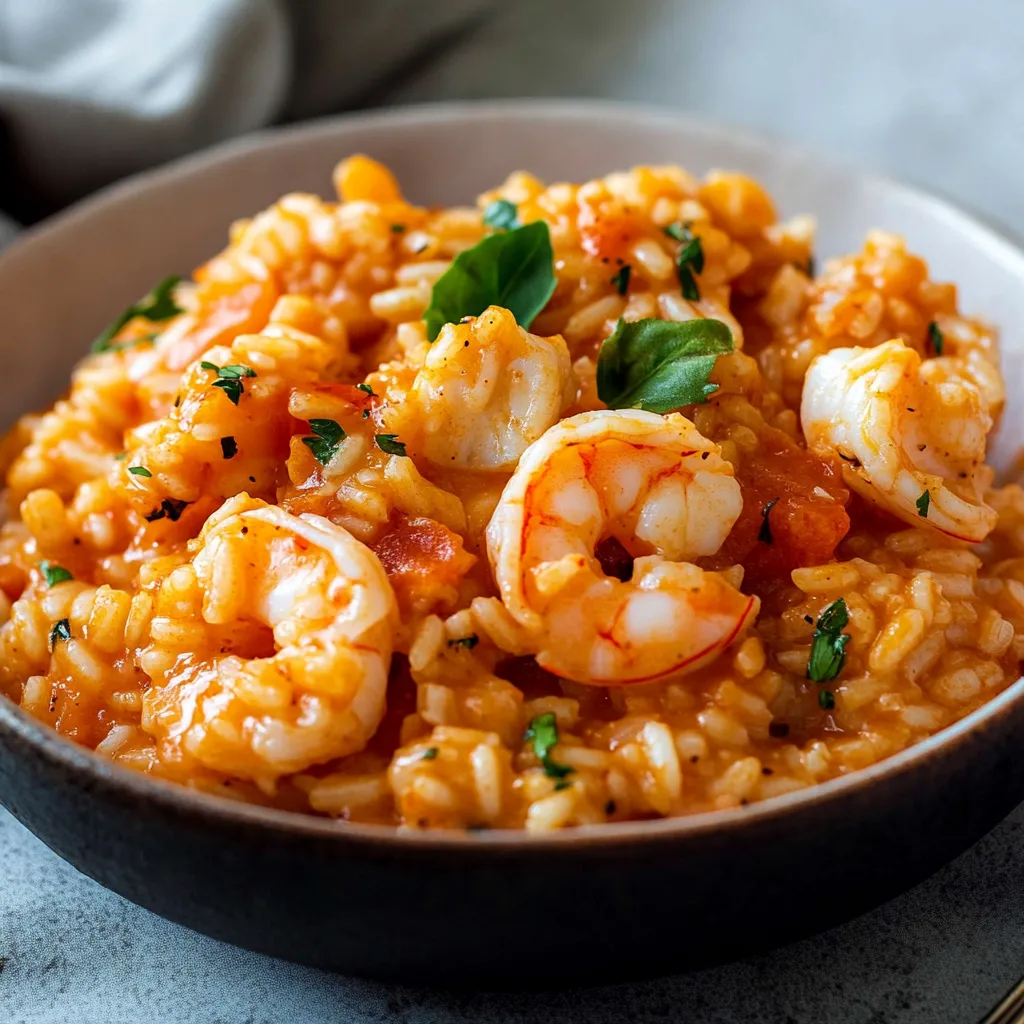 Save
Save
This rich seafood and rice dish brings the breezy tastes of Italy’s seaside into your own kitchen. Creamy Arborio rice gives a smooth base for juicy shrimp and scallops, with a broth laced with tomato for a punch of bright flavor. It’s fancy enough for a special night but easy to do right at your table.
I first learned how to make this in a Venice class and have changed little details over time to hit the right mix of seafood taste and creamy rice. Now it’s my favorite way to wow friends for dinner without being stuck cooking all day.
Irresistible Ingredients
- Red pepper flakes: Add a gentle kick if you like a little spice with your seafood
- Butter plus olive oil: Together they start everything off with a great taste
- Fresh garlic: Use real cloves for the best flavor
- Onion (yellow): Chopped up, it forms a tasty foundation as it cooks
- Lemon juice (fresh): Pulls all the flavors together and keeps things lively
- Seafood or veggie stock: Homemade makes it shine, but a good boxed one will do fine
- Tomato paste: Packs the broth with color and deep flavor
- A good white wine: Pick something you’d actually sip, not generic “cooking wine”
- Jumbo shrimp: Go for wild-caught if you spot it, the flavor pops
- Scallops (sea): Dry-packed types work best and skip the chemicals
- Arborio rice: Needed here because it gets so creamy without turning mushy
Simple How-To Guide
- Finish With Seasoning:
- Grab a spoon and taste. Add salt and pepper, or toss in those red pepper flakes if you want a little heat. Go easy—the seafood will bring some saltiness on its own. A splash of lemon juice gives things a fresh boost right at the end if you think it needs it.
- Add the Seafood:
- When there’s just one cup of stock left to go, drop in the shrimp and scallops straight into your rice pot. Stir gently. Let them simmer in the creamy rice for five minutes or so—they’re done when they turn opaque and tender.
- Mix in Tomato Broth:
- Now, pour in the tomato-stock blend one cup at a time, stirring and letting it soak in before adding more. You’ll see the rice turn a pretty orange and start to look extra creamy.
- Make Tomato Stock:
- When there are only two cups of your hot stock left, stir in the tomato paste until it disappears. This gives you a tomato-forward broth that makes all the difference. Bring it back to a gentle simmer on the stove.
- Pour and Stir Stock:
- Add a ladle full of warm stock to your rice. Keep stirring until most of it’s gone—about 4–5 minutes each time. Just keep the mixture bubbling softly. When you see the liquid’s absorbed, add another ladle. Repeat until you’re almost out of stock.
- Toast the Rice With Wine:
- Pour in the white wine and lemon juice. It’ll sizzle and loosen any stuck bits. Add Arborio rice and toss it around for about two minutes—it should get a bit translucent at the edges. Don’t skip this part, it helps the rice keep its shape.
- Start the Flavor Base:
- Drop butter and olive oil into a big skillet set over medium. When the butter melts and gets a little bubbly, toss in chopped onion. Give it about three minutes to get soft. Scatter in garlic, stir for another two minutes, and don’t let it brown or it’ll taste off.
- Heat Your Stock:
- Warm up the seafood or veggie stock in a pot on another burner and let it barely simmer. Keep it warm—you don’t want to add cold liquid to your rice or it’ll cook unevenly.

I always think about watching a chef in Venice make risotto so patiently, just stirring and taking his time, and that’s stuck with me every time I cook now. It showed me that great food comes from caring about the little moments, not just the end result.
Best Seafood Picks
Try to pick the freshest seafood you can find for the tastiest risotto. For frozen shrimp or scallops, thaw them all the way and pat them dry with paper towels so you don’t get a watery mess. Good scallops should smell faintly sweet and feel firm, bouncing back with a gentle press. With shrimp, steer clear of any weird smells or if they’re sticky—they should only smell like the ocean.
Easy Make-Ahead Tricks
Risotto’s usually served right away, but you can do parts ahead to keep things easy. Prep your stock, even with tomato paste, a day before and store it in the fridge. You can also get the rice cooked up to just before adding the last bit of broth and seafood—then, when you’re set to serve, just heat up the risotto with a little more warm stock and finish with the seafood. Hosting’s way less stressful that way.
Tasty Wine Matches
If you want something to sip, grab a bottle of chilled dry white wine. Pinot Grigio from Italy works great, adding some brightness and matching the shrimp and scallops nicely. Vermentino or Soave are also awesome choices, bringing out those briny flavors from the seafood. Use good glasses and keep the wine cold—it definitely bumps up the whole dinner.

This creamy seafood risotto is both comfort and a little luxury on a plate. Perfect if you want to make folks say wow without working too hard for it.
Common Recipe Questions
- → Is there a different rice I can use if I don't have Arborio?
If you can’t get Arborio, go with Carnaroli, Vialone Nano, or even a short-grain sushi rice. These rice types will get creamy, just keep in mind the texture might not match exactly, but it gets the job done.
- → Can I prep this dish in advance?
This dish is at its best fresh and hot off the stove. If you really need to get ahead, stop cooking when the rice is just a bit underdone and wait to add the seafood. Let it cool, toss it in the fridge, and finish later by heating with more broth and stirring in the seafood at the end.
- → Which wine goes with this best?
If you want to drink something with your seafood risotto, a dry, zesty white wine is perfect. Reach for Pinot Grigio, Sauvignon Blanc, or Chardonnay with no oak. Bonus points for using the same wine for both the dish and your glass. Italian picks like Soave or Vermentino are great too.
- → Can frozen seafood work here?
Sure thing! Frozen seafood is fine. Thaw it all the way first and really dry it off with a towel so your risotto doesn't get soggy. Frozen seafood keeps its taste because it's frozen fast after it’s caught. Just try not to overcook it since defrosted seafood cooks fast.
- → How do I know when it's done?
The grains should be mostly tender with just a little bite in the center. Your risotto should look creamy and spread gently if you shake the pan. People in Italy call this 'all'onda', meaning it waves or flows when you dish it out—it shouldn't pile up stiff, but glide onto the plate.
- → What if I want to mix in other seafood?
Go ahead and toss in other seafood you like. Chunks of white fish, calamari, mussels, clams (if they’re in shells, just cook them a bit longer so they open up). Crab meat is awesome stirred in last minute. Just keep watch—different seafood needs different cooking times.
